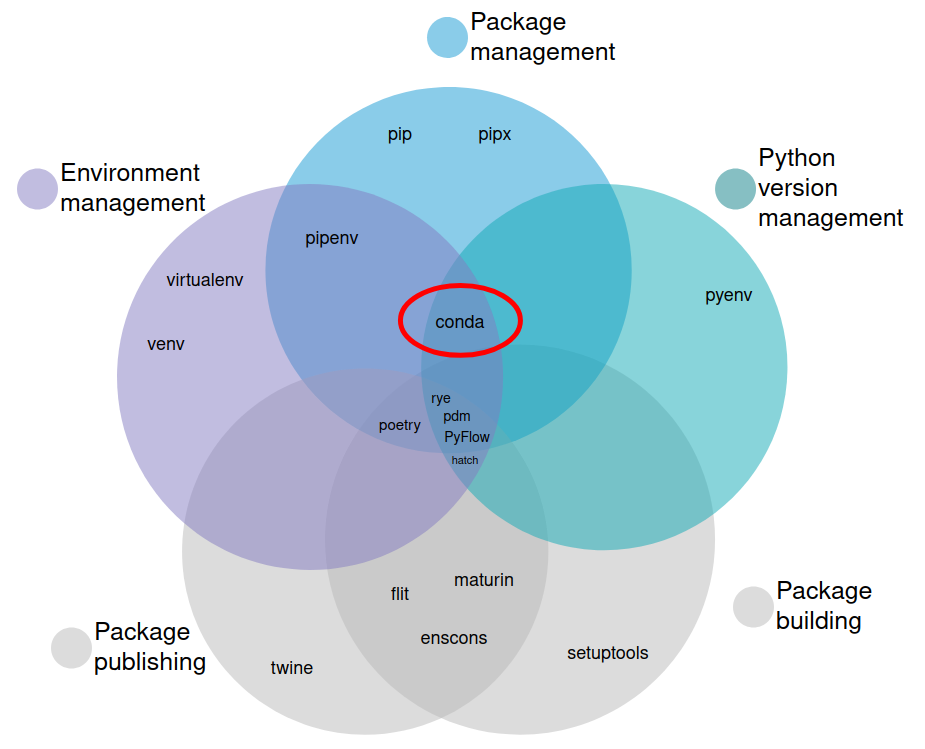When working with Python, managing packages efficiently is vital to building scalable and maintainable applications. The command pip install is the most commonly used method for installing packages and dependencies from the Python Package Index (PyPI) and other repositories.
This article provides a complete overview of how to pip install, including practical examples, advanced tips, and real-world use cases. Whether you’re setting up a new project, working in a virtual environment, or troubleshooting dependency issues, mastering pip is essential for a smooth Python development experience.
What Is pip in Python?
pip stands for “Pip Installs Packages.” It is the default package manager for Python and allows you to install, update, and manage third-party libraries that extend Python’s capabilities.

Pip connects directly to PyPI — the official third-party software repository for Python — enabling seamless installation of thousands of open-source libraries like NumPy, Pandas, Flask, Django, and TensorFlow.
Why pip install Is Crucial for Python Developers
- Access to Thousands of Libraries: From data analysis to web development and machine learning, pip install gives access to over 400,000 projects on PyPI.
- Dependency Management: It helps manage dependencies required for Python projects efficiently.
- Simplified Environment Setup: Automates installation of packages with specific versions for project consistency.
- Cross-Platform: Works the same way across Windows, macOS, and Linux.
Prerequisites for Using pip
Before using pip install, ensure:
- Python is installed on your system (preferably Python 3.6+).
- Pip is installed and updated.
- Internet access is available for downloading packages.
- (Optional) A virtual environment is activated for project-specific dependencies.
Check Python and pip versions:
python --version
pip --version
If pip is not recognized, you may need to add it to your system’s PATH or install it manually.
How to Install pip
On most modern systems, pip is installed automatically with Python. If not:
a. Using get-pip.py
Download the script and install:
curl https://bootstrap.pypa.io/get-pip.py -o get-pip.py
python get-pip.py
b. Linux Systems
Install using the package manager:
sudo apt install python3-pip # Ubuntu/Debian
c. macOS with Homebrew
brew install python # Installs Python and pip
Understanding the pip install Command
The basic syntax is:
pip install package-name
Examples:
pip install requests
pip install numpy
You can also specify versions:
pip install pandas==1.5.3
Or upgrade to the latest:
pip install --upgrade pandas
To install multiple packages:
pip install pandas matplotlib seaborn
Real-Time Examples of pip install
Example 1: Installing a Data Analysis Stack
A data scientist might install the following in one command:
pip install pandas numpy matplotlib seaborn scikit-learn
This enables real-time data processing, model training, and visualization in one Jupyter Notebook environment.
Example 2: Installing Web Development Tools
A backend developer building a Flask API might use:
pip install flask gunicorn flask-cors
This stack enables API building, CORS handling, and deployment.
Using pip install with Virtual Environments
Using virtualenv or venv is a best practice to avoid package conflicts between projects.
python -m venv myenv
source myenv/bin/activate # Linux/macOS
myenv\Scripts\activate # Windows
pip install requests
This ensures packages are isolated and specific to your project.
Installing from Requirements Files
In team or production settings, it’s common to define dependencies in a requirements.txt file.
# requirements.txt
flask==2.3.2
sqlalchemy>=2.0
gunicorn
Install using:
pip install -r requirements.txt
This replicates environments across machines and CI/CD pipelines.
Upgrading and Uninstalling Packages with pip
Upgrading:
pip install --upgrade package-name
Uninstalling:
pip uninstall package-name
To uninstall all packages:
pip freeze > requirements.txt
pip uninstall -r requirements.txt -y
Handling Common Errors in pip install
a. SSL or Certificate Errors
Try:
pip install --trusted-host pypi.org --trusted-host files.pythonhosted.org package-name
b. Permission Denied
Use:
pip install --user package-name
Or run with admin privileges (not recommended for shared environments):
sudo pip install package-name
c. Version Conflicts
Use virtual environments or pipdeptree to inspect conflicts.
Understanding Packages in Python
In Python, a package is a collection of related modules bundled together for reuse and modular programming. Packages help developers organize large codebases, promote code reusability, and avoid naming conflicts. A package is essentially a directory containing multiple modules and a special file named __init__.py, which tells Python to treat the directory as a package.
Example:
my_project/
│
├── data_processing/
│ ├── __init__.py
│ ├── cleaning.py
│ ├── transform.py
│
├── visualization/
│ ├── charts.py
│ ├── __init__.py
│ ├── plots.py
Here, data_processing and visualization are packages containing multiple Python modules.
You can import and reuse their functionalities as:
from data_processing.cleaning import remove_nulls
from visualization.charts import plot_bar
Packages are the foundation of Python’s extensibility. Whether you install NumPy for numerical computing, Pandas for data manipulation, or Flask for web development, you are essentially downloading pre-built Python packages from PyPI (Python Package Index).
Understanding Package Managers: pip
A package manager is a tool that automates the process of installing, upgrading, configuring, and managing software packages. In Python, pip (Pip Installs Packages) is the standard package manager that connects to PyPI, the largest open-source repository for Python software.
pip simplifies dependency management by automatically fetching required modules and their sub-dependencies. For example:
pip install requests
This single command downloads the requests package and all libraries it depends on, such as urllib3 and certifi.
Key Functions of pip:
Installation: pip install package_name
Uninstallation: pip uninstall package_name
Upgrade Packages: pip install --upgrade package_name
List Installed Packages: pip list
View Package Info: pip show package_name
Check Outdated Packages: pip list --outdated
These commands form the backbone of Python environment management, especially when working with multiple dependencies or collaborating in a team setup.
pip vs pip3 vs pip2 — What’s the Difference?
Python has undergone significant changes over time, particularly with the transition from Python 2 to Python 3. As a result, developers may encounter different pip commands depending on which version of Python is installed.
Command Associated Python Version Usage Example
pip Default pip (depends on system config) pip install numpy
pip3 Specifically for Python 3.x pip3 install pandas
pip2 Specifically for Python 2.x (deprecated) pip2 install flask
pip3 ensures the package installs in the Python 3 environment, which is essential on systems where both Python 2 and Python 3 coexist.
Python 2.x reached end of life in 2020, so using pip3 is now the standard practice for modern Python development.
On some systems, pip may automatically point to Python 3’s package manager, but verifying with:
pip --version
ensures you’re working with the right environment.
Troubleshooting pip
Despite its simplicity, pip can occasionally produce errors related to permissions, SSL certificates, version conflicts, or environment issues. Below are advanced troubleshooting techniques every Python developer should know:
1. Permission Denied Errors
Occurs when installing globally without administrative rights.
pip install --user package_name
Use the –user flag to install packages locally for your user account.
2. SSL or Certificate Verification Errors
Happens on systems with outdated certificates or network restrictions.
pip install --trusted-host pypi.org --trusted-host files.pythonhosted.org package_name
Alternatively, update SSL certificates or use a secure corporate proxy.
3. Outdated pip Version
Outdated versions may fail to install modern packages.
python -m pip install --upgrade pip
4. Dependency Conflicts
If pip reports incompatible package versions, use:
pip install package_name --use-deprecated=legacy-resolver
Or inspect dependencies:
Pipdeptree
5. Virtual Environment Conflicts
Ensure you are inside the correct virtual environment:
which python
which pip
Deactivate and reactivate the environment if needed.
6. Cache Issues
Clear pip cache if installations keep failing:
pip cache purge
Advanced pip install Techniques
Install from GitHub
pip install git+https://github.com/psf/requests.git
Install Wheel File
pip install some_package-1.0.4-py3-none-any.whl
Install Local Directory
pip install ./my_package/
External Tools That Work with pip

- Poetry – Simplified dependency and packaging.
- Pipenv – Pip + Virtualenv management.
- Conda – Alternative package manager for scientific computing.
- pip-tools – For managing pinned requirements.
These tools add automation, version control, and reproducibility.
Best Practices When Using pip install
- Use a requirements.txt for project consistency.
- Prefer installing inside virtual environments.
- Avoid using sudo unless necessary.
- Freeze dependencies for production:
pip freeze > requirements.txt
- Regularly update pip:
pip install --upgrade pip
- Check outdated packages:
pip list --outdated
Internal and External Resources
Internal Links:
- Python Environment Setup Guide
- Python vs Anaconda for Data Science
External DoFollow Links:
- pip Documentation (Official)
- PyPI (Python Package Index)
- Python.org – pip Installation Guide
Future of pip and Package Management in Python
The Python packaging ecosystem is evolving rapidly. Modern tools like Poetry, PDM, and Hatch build on top of pip’s foundations, offering advanced dependency management, lock files, and publishing workflows.
However, pip remains the core tool used by Python and is deeply integrated into environments like Jupyter, Anaconda, and cloud-based IDEs (Google Colab, AWS SageMaker, etc.).The future of Python development will likely blend pip’s simplicity with Poetry’s automation and Conda’s environment control, giving developers more power and precision over their dependency trees.
Conclusion
Mastering how to pip install is fundamental to working effectively with Python. From simple installations to managing virtual environments and complex dependency trees, pip is the backbone of modern Python workflows.
Whether you’re setting up your first Flask API or deploying a machine learning pipeline, the knowledge of pip install ensures smooth, reproducible environments and faster development cycles.
If you’re new to Python, consider bookmarking this guide and referring to it whenever you’re managing packages.
FAQ’s
How to install pip in Python step by step?
To install pip in Python, download and run the get-pip.py script or use a command like python -m ensurepip --upgrade, then verify the installation by running pip --version in your terminal or command prompt.
How to manage packages in Python using pip?
You can manage packages in Python using pip by running commands like pip install package_name to add packages, pip uninstall package_name to remove them, and pip list to view all installed packages.
How to install Python step by step guide?
To install Python step by step:
Download Python – Visit the official site python.org/downloads.
Run the Installer – Open the downloaded file.
Check “Add Python to PATH” – Ensure this option is selected before installation.
Click Install Now – Follow the prompts to complete installation.
Verify Installation – Open Command Prompt or Terminal and run python --version to confirm Python is installed.
How do I install a specific Python package with pip?
To install a specific Python package with pip, use the command:
pip install package_name==version_number
For example:
pip install numpy==1.24.0
This ensures you install the exact version of the package you need.
What is a pip package manager?
The pip package manager is a command-line tool in Python used to install, update, and manage third-party libraries and packages from the Python Package Index (PyPI) and other repositories.




